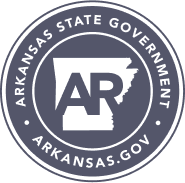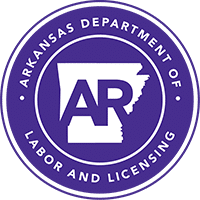-
General Information and Instructions.
The current ASA Relative Value Guide, by the American Society of Anesthesiologists will be used to determine reimbursement for codes that do not appear in the RBRVS. These values are to be used only when the anesthesia is personally administered by an Anesthesiologist or Certified Registered Nurse Anesthetist (CRNA) who remains in constant attendance during the procedure, for the sole purpose of rendering such anesthesia service.
To order the Relative Value Guide, write to the American Society of Anesthesiologists; 520 N Northwest Highway; Park Ridge, IL 60068-2573 or call (847)825-5586.
When anesthesia is administered by a CRNA not under the medical direction of an anesthesiologist, reimbursement shall be 90% of the provider’s usual charge or the ARA, which ever is less. No payment will be made to the surgeon supervising the CRNA.
When anesthesia is administered personally by an anesthesiologist or administered by a care team involving an anesthesiologist and CRNA, reimbursement shall not exceed 100% of the provider’s usual charge or the ARA, whichever is less.
-
Anesthesia Values
Each anesthesia service contains two value components which make up the charge and determine reimbursement: a Basic Value and a Time Value.
-
Basic Value
Basic Value relates to the complexity of the service and includes the value of all usual anesthesia services except the time actually spent in anesthesia care and any modifiers. The Basic Value includes usual preoperative and postoperative visits, the anesthesia care during the procedure, the administration of fluids and/or blood products incidental to the anesthesia or surgery and interpretation of non-invasive monitoring (ECG, temperature, blood pressure, oximetry, capnography, and mass spectrometry). When multiple surgical procedures are performed during an operative session, the Basic Value for anesthesia is the Basic Value for the procedure with the highest unit value. The Basic Values in units for each anesthesia procedure code are listed in the current ASA Relative Value Guide.
-
Time Value
Anesthesia time starts when the anesthesiologist or CRNA begins to prepare the patient for induction of anesthesia and ends when the personal attendance of the anesthesiologist or CRNA is no longer required and the patient can be safely placed under customary, postoperative supervision. Anesthesia time must be reported on the claim form as the total number of minutes of anesthesia. For example, one hour and eleven minutes equals 71 minutes of anesthesia. The Time Value is converted into units for reimbursement as follows:
Each 15 minutes or any fraction thereof equals one (1) time unit.
Example: 71 minutes of anesthesia time would have the following time units: 71/15 = 5 Time Units.
No additional time units are allowed for recovery room observation monitoring after the patient can be safely placed under customary postoperative supervision.
-
Total Anesthesia Value
The total anesthesia value (TAV) for an anesthesia service is the sum of the Basic Value (units) plus the Time Value which has been converted into units. The TAV is calculated for the purpose of determining reimbursement.
-
Billing
Anesthesia services must be reported by entering the appropriate anesthesia procedure code and descriptor into Element 24 D of the HCFA 1500 Form. The provider’s usual total charge for the anesthesia service must be entered in Element 24 F on the HCFA 1500 Form. The total time in minutes must be entered in Element 24 G of the HCFA 1500 Form.
-
Reimbursement
Reimbursement for anesthesia services must be made at the provider’s usual charge or the Anesthesia Reimbursement Allowance (ARA), whichever is less. The ARA is calculated by determining the total anesthesia value for the service rendered and then multiplying that value by an established conversion factor which has a dollar value.
Total Anesthesia Value (Basic Value + Time Value + Physical Status Modifiers when applicable)
X Conversion Factor = ARA
The conversion factor for Arkansas Workers’ Compensation is $41.76
-
Methodology for Calculating ARAs
- Refer to the Anesthesia Codes in the Relative Value Guide to locate the applicable anesthesia procedure code and corresponding Basic Value.
- Determine Time Units.
- Any minutes which exceed the whole units are counted as whole units.
- Add Basic Value and Time Units to determine Total Anesthesia Value (TAV).
- Multiply TAV by the Conversion Factor, $41.76, to obtain the ARA.
-
Special Anesthesia Services
-
Unusual Circumstances (Modifiers 22, and 23).
Under certain circumstances, the anesthesia service(s) provided may vary significantly from those usually required for the listed procedures. The use of modifiers is appropriate for these instances. The following are modifiers which are commonly used in anesthesia services.
-
22 Unusual Services: When the service(s) provided is greater than usually required for the listed procedure, it may be identified by adding modifier 22 to the usual procedure number or by use of the separate five-digit modifier code 09922. A report is required.
-
23 Unusual Anesthesia: Occasionally a procedure which usually requires either no anesthesia or local anesthesia, because of unusual circumstances, must be done under general anesthesia. This circumstance may be reported by adding the modifier 23 to the procedure code of the basic service or by use of the separate five digit modifier code 09923.
-
For additional modifiers for physical status and qualifying circumstances see the Relative Value Guide. The use of modifiers does not guarantee additional reimbursement.
-
Monitored Anesthesia Care
When an anesthesiologist or CRNA is required to participate in, and be responsible for, monitoring the general care of the patient during surgery but does not administer anesthetic, such professional services must be billed and reimbursed as though an anesthetic were administered; that is, basic anesthesia plus time.
-
Medical Direction Provided by Anesthesiologists
When an anesthesiologist is not personally administering the anesthesia but is providing medical direction for the services of a nurse anesthetist who is not employed by the anesthesiologist, the anesthesiologist may bill for the medical direction. Medical direction includes the pre and postoperative evaluation of the patient. The anesthesiologist must remain within the operating suite, including the pre-anesthesia and post-anesthesia recovery areas, except in extreme emergency situations. Reimbursement for medical direction by anesthesiologists must be at the provider’s usual charge or 50 percent of the ARA, whichever is less.
-
Anesthesia by Surgeon
-
Local Anesthesia
When infiltration, digital block or topical anesthesia is administered by the operating surgeon or surgeon’s assistant, reimbursement for the procedure and anesthesia are included in the global reimbursement for the procedure.
-
Regional or General Anesthesia
When regional or general anesthesia is provided by the operating surgeon or surgeon’s assistant, the surgeon may be reimbursed for the anesthesia service in addition to the surgical procedure.
- To identify the anesthesia service, list the CPT surgical procedure code and add Modifier 47.
- Reimbursement shall be either the provider’s usual charge or the ARA.
The operating surgeon must not use the diagnostic or therapeutic nerve block codes to bill for administering regional anesthesia for a surgical procedure.
-
Unlisted Service, Procedure or Unit Value
When an unlisted service or procedure is provided or without specified unit values, the values used should be substantiated “BR” (By Report).
-
Procedures Listed In The ASA Relative Value Guide Without Specified Unit Values
For any procedure or service that is unlisted or without specified unit value, the physician or anesthetist shall establish a unit value consistent in relativity with other unit values shown in the current ASA Relative Value Guide. Pertinent information concerning the nature, extent and need for the procedure or service, the time, the skill and equipment necessary, etc., is to be furnished. Sufficient information should be furnished to identify the problem and the service(s).
-
Actual time
of beginning and duration of anesthesia time may require documentation, such as a copy of the anesthesia record in the hospital file.
-
Special Supplies
Supplies and materials provided by the physician over and above those usually included with the office visit or other services rendered may be listed separately. List drugs, tray supplies, and materials provided separately.
Supplies and materials provided in a hospital or other facility must not be billed separately by the physician or CRNA. These charges must be billed by the hospital.
-
Separate or Multiple Procedures
It is appropriate to designate multiple procedures that are rendered on the same date by separate entries.

